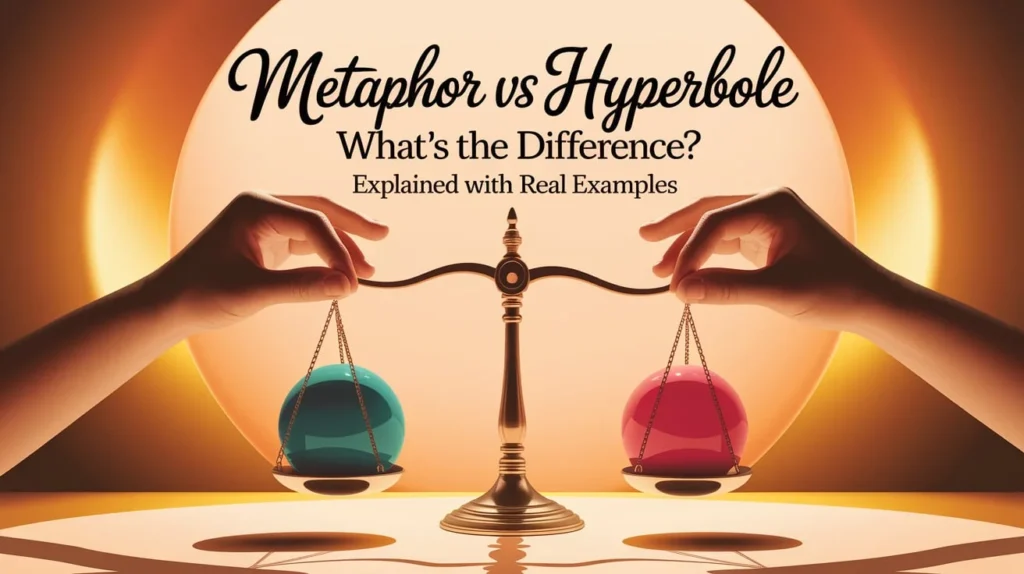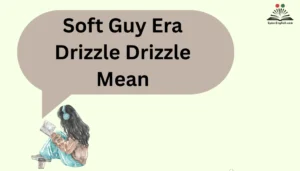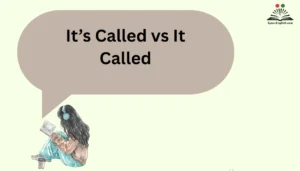When it comes to understanding language and how it shapes communication, figures of speech are key. Among the most commonly misunderstood are metaphors vs hyperboles. These literary devices are often used interchangeably, but they serve different purposes. Whether you’re a writer, marketer, or someone who simply enjoys playing with language, knowing the difference can help you convey your message more effectively. In this article, we’ll dive into the distinction between metaphor vs hyperbole, provide clear examples, and guide you on when and how to use each one.
At first glance, metaphor and hyperbole might seem similar because both amplify meaning or add flair to language. However, the way they achieve this is distinct, and using them correctly can elevate your writing. A metaphor compares one thing to another, creating a deeper, more symbolic meaning, while a hyperbole involves exaggerated statements, often used for dramatic effect or emphasis. While they both enrich language, knowing when to use each can be the key to more effective and impactful communication.
So, whether you’re crafting the perfect metaphor for a novel or using hyperbole to make an ad pop, understanding these concepts is crucial. Let’s break down these two figures of speech and see how they work, using real-life examples to make things clear.
What Is a Metaphor?
A metaphor is a figure of speech where one thing is described as if it is something else. It’s a direct comparison that doesn’t use “like” or “as,” which would make it a simile. Metaphors are powerful because they can convey complex ideas or emotions by linking something unfamiliar with something familiar. This figurative language helps the reader or listener create a mental image that communicates a deeper meaning.
How Metaphors Work
Metaphors draw connections between two dissimilar things, essentially saying one thing is another. The comparison isn’t literal but figurative, aiming to create a stronger image or evoke specific emotions.
For instance, when Shakespeare wrote, “All the world’s a stage,” he wasn’t implying the literal world is a physical stage. Instead, he was illustrating life as a performance, full of roles and acts that individuals play during their lifetimes. This is a metaphor that communicates a deeper message about the transient nature of life.
Common Types of Metaphors
Metaphors come in various forms depending on their usage and context. Let’s explore the most common types:
- Implied Metaphors: These suggest a comparison without stating it directly. Example: “She was a lion in the fight,” implies she has the qualities of a lion—strength and courage.
- Extended Metaphors: These stretch over several lines or sentences, allowing the comparison to unfold throughout the passage. An example would be a poem where the metaphor of life as a journey is extended across multiple verses.
- Mixed Metaphors: This occurs when two unrelated metaphors are combined. While it can be confusing, it’s often used for humor or exaggeration. Example: “We’ll burn that bridge when we come to it,” mixes “we’ll cross that bridge when we come to it” with “burning bridges,” creating an amusing but confusing image.
- Dead Metaphors: These are metaphors that have lost their original power because they’ve been used so often. For example, “the foot of the mountain” is a metaphor that’s commonly used but no longer carries much impact because it’s been overused.
- Visual Metaphors: Often used in advertising, visual metaphors rely on images to convey meaning. For example, an ad showing a person soaring like an eagle to promote a brand of wings uses a visual metaphor to suggest freedom and power.
Real Examples of Metaphors in Everyday Life
Metaphors aren’t confined to the pages of novels or poetry; they exist in everyday language and are part of how we make sense of the world. Here are a few real-life examples of metaphors:
- “Time is money”: This metaphor implies that time is valuable and should not be wasted, much like money.
- “The classroom was a zoo”: This metaphor highlights the chaotic nature of the classroom, equating it to a zoo without saying it directly.
- “A heart of stone”: This metaphor suggests someone is emotionally cold or unfeeling, drawing a comparison between the heart and stone to illustrate a lack of warmth.
- “The world is a stage”: As mentioned earlier, this famous metaphor from Shakespeare is used to describe life’s transience and the roles we play.
- “He’s a night owl”: Here, the comparison between a person and an owl is used to describe someone who stays up late, often with connotations of wisdom or mystery.
What Is Hyperbole?
A hyperbole is an exaggerated statement or claim not meant to be taken literally. Hyperboles are used to emphasize something, whether it’s to express emotion, make a point, or create humor. Unlike metaphors, which draw comparisons, hyperboles stretch the truth to an extreme level to make something seem more dramatic than it actually is.
How Hyperboles Work
Hyperboles exaggerate certain characteristics of something in a way that is intentionally over the top. Think of them as inflated metaphors—instead of making a comparison, they simply say that something is much more than it really is.
For example, when someone says, “I’ve told you a million times,” they’re not claiming that they’ve literally told someone a million times. They’re simply emphasizing that they’ve said it many times.
Common Forms of Hyperbole
Hyperboles can appear in different forms depending on their context. These include:
- Verbal Hyperbole: This is the most common form, where a statement is exaggerated for effect. Example: “I could sleep for a thousand years,” implies extreme tiredness.
- Visual Hyperbole: Often used in advertisements or comics, visual hyperboles exaggerate visual elements. For example, a commercial showing a man lifting a car is using hyperbole to suggest he’s extraordinarily strong.
- Literary Hyperbole: In literature, hyperbole is used for dramatic effect. In The Odyssey, Homer describes the Cyclops as a giant who could devour ships and crew, which is an exaggerated way of describing his terrifying nature.
Real Examples of Hyperbole in Action
Hyperboles are so ingrained in everyday language that we often use them without realizing it. Here are some examples of hyperbole in various contexts:
- “I’m so hungry, I could eat a horse”: This is a classic example of verbal hyperbole, emphasizing extreme hunger.
- “This is the best thing I’ve ever tasted in my life”: A hyperbole used to express extreme satisfaction with something delicious.
- “He ran faster than a speeding bullet”: This is a common hyperbole used to suggest someone is incredibly fast.
- “I’m dying of laughter”: Often used in comedy or casual conversation, this hyperbole exaggerates the intensity of amusement.
- “I have a ton of homework”: This statement exaggerates the amount of homework one has to make the task seem overwhelming.
Key Differences Between Metaphor and Hyperbole
While both metaphor and hyperbole are figures of speech, they have key differences in how they work and their purposes. Let’s break them down:
| Aspect | Metaphor | Hyperbole |
| Definition | A comparison between two unlike things. | An exaggerated statement for emphasis. |
| Purpose | To create a deeper, more symbolic meaning. | To emphasize or exaggerate a point. |
| Literal vs Figurative | Always figurative (not literal). | Always figurative (not literal). |
| Impact | Adds complexity and layers of meaning. | Adds emphasis, humor, or drama. |
| Example | “Time is a thief.” | “I’ve told you a million times.” |
While metaphors enhance meaning and make ideas more vivid, hyperboles increase emotional impact or drama.
When to Use Metaphor vs Hyperbole
Knowing when to use a metaphor or hyperbole depends on your purpose and the effect you want to create. Here are some guidelines to help you choose the right device:
Use a Metaphor When:
- You want to make a strong, vivid comparison.
- You aim to evoke deeper meaning or symbolism.
- You want to make abstract ideas or emotions more concrete and relatable.
- You’re writing poetry, literature, or creative pieces where you need to convey more than just the surface meaning.
Use a Hyperbole When:
- You want to emphasize something, making it seem larger or more significant than it really is.
- You’re aiming for humor or dramatic effect.
- You want to convey intensity or make a strong impression quickly.
- You’re writing advertisements, jokes, or casual speech where exaggeration is often used for effect.
Metaphor and Hyperbole in Combination
Sometimes, you might want to use both devices together. This can make your language even more powerful and engaging. For example:
- “Her eyes were the size of saucers, sparkling like diamonds.”
In this case, the metaphor (“eyes are diamonds”) is paired with the hyperbole (“size of saucers”) to create a striking, exaggerated image.
Using both can heighten the effect of your writing, but be cautious—too many metaphors or hyperboles can overwhelm the reader and detract from your message.
Final Thoughts: Clarity in Creative Expression
Metaphors and hyperboles are both powerful tools in the world of language. Understanding the difference between the two allows you to wield them more effectively in your writing, speech, and creative projects. Whether you want to evoke strong imagery with metaphors or make an impact with hyperboles, each device has its place in helping you communicate more vividly.
Next time you’re crafting a sentence, consider whether a metaphor or hyperbole will better convey your idea. Both are invaluable in creating engaging, memorable content, but using them intentionally and appropriately will ensure your message comes across with maximum clarity and impact.
FAQ
- Are metaphors and hyperboles the same?
No, they serve different purposes: metaphors create comparisons to deepen meaning, while hyperboles exaggerate for emphasis. - Can something be both a metaphor and a hyperbole?
Yes! Sometimes a metaphor may involve hyperbole to make a comparison more dramatic. - Why are these figures of speech important?
They enrich language, make writing more engaging, and help convey ideas in more compelling ways.

Emma Rose is an experienced English educator, writer, and language enthusiast dedicated to helping learners unlock the full power of the English language. At SynoEnglish, she shares practical grammar tips, clear explanations, and real-world language insights to make learning both effective and enjoyable. With a passion for words and a love for clarity, Emma’s goal is to help readers speak and write with confidence.



